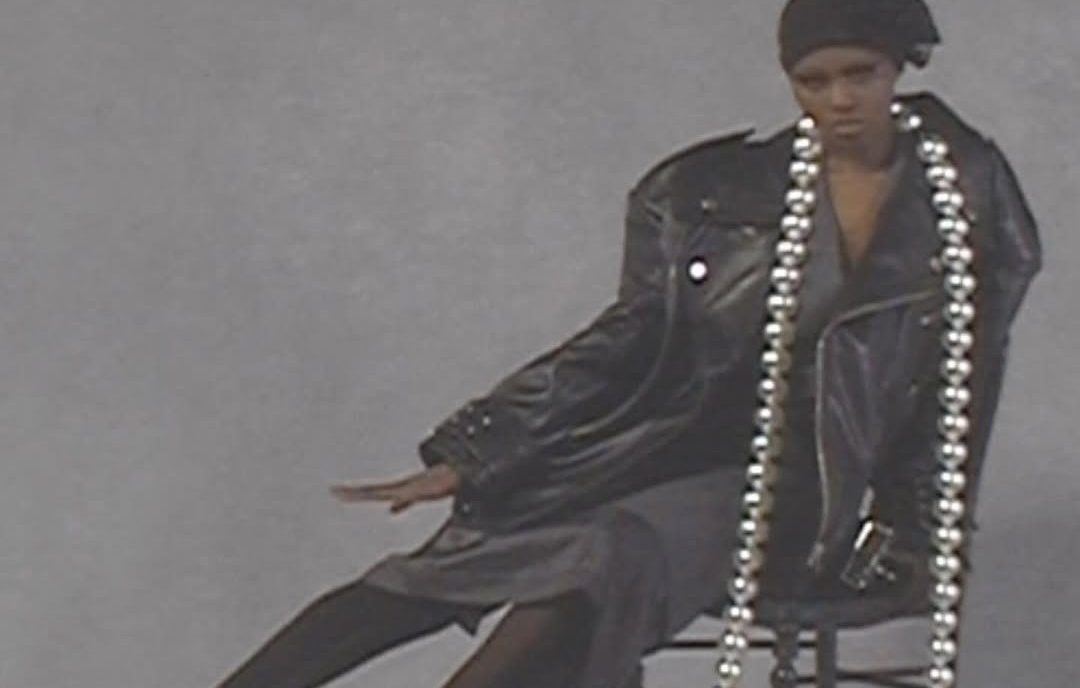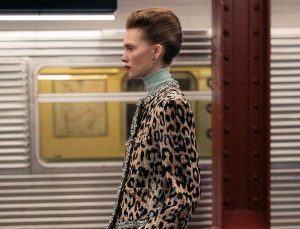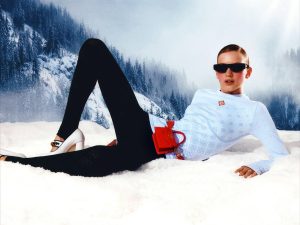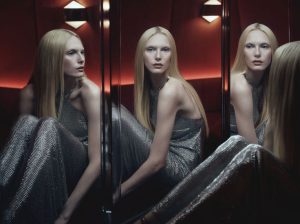Vaquera, Patou, Vaillant: brands are thinking big, very big. Monumental earrings, statement necklaces, baroque brooches, or oversized pearls… Jewelry is no longer just an accessory; it’s taking over entire looks. From the runway to social media, it grabs attention, challenges the codes of good taste, and reinvents the very idea of adornment.
From accessories to centerpieces
Long relegated to the background, jewelry now takes center stage in fashion silhouettes. Today, it just doesn’t punctuate an outfit, it makes a bold statement, sometimes even outshining the clothes themselves. Even during couture week, when the spotlight is meant to be on craftsmanship and the drape of fabrics, it’s the jewelry that catches the attention.
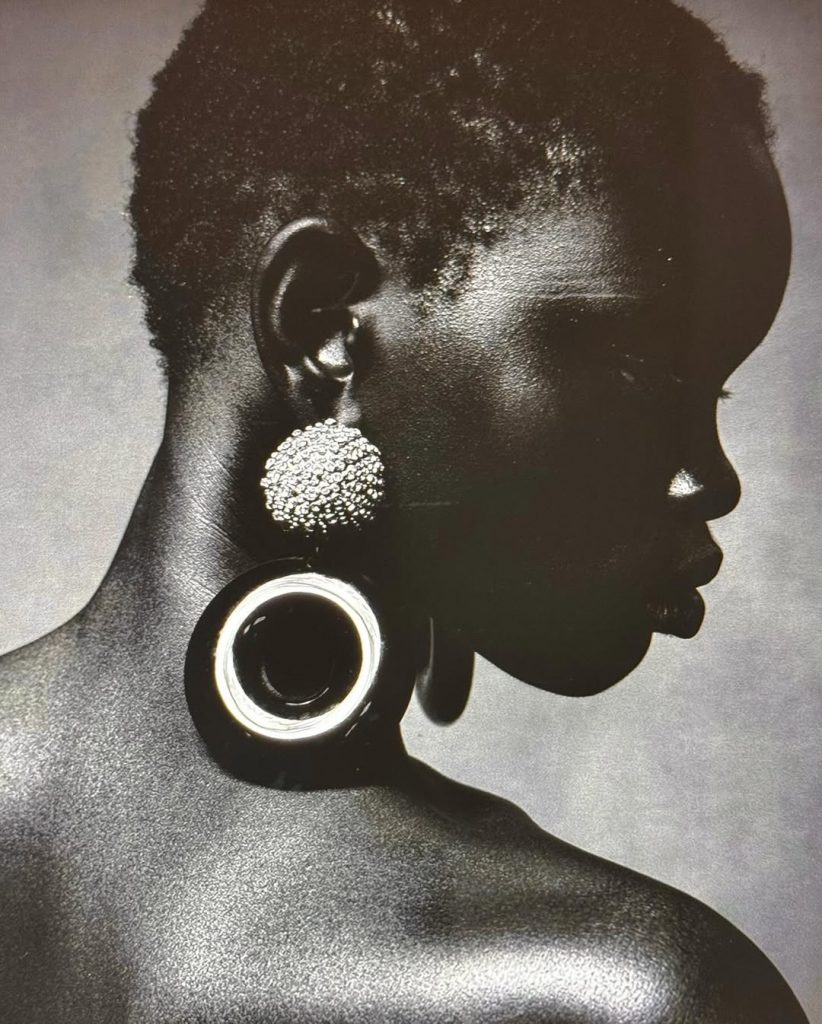
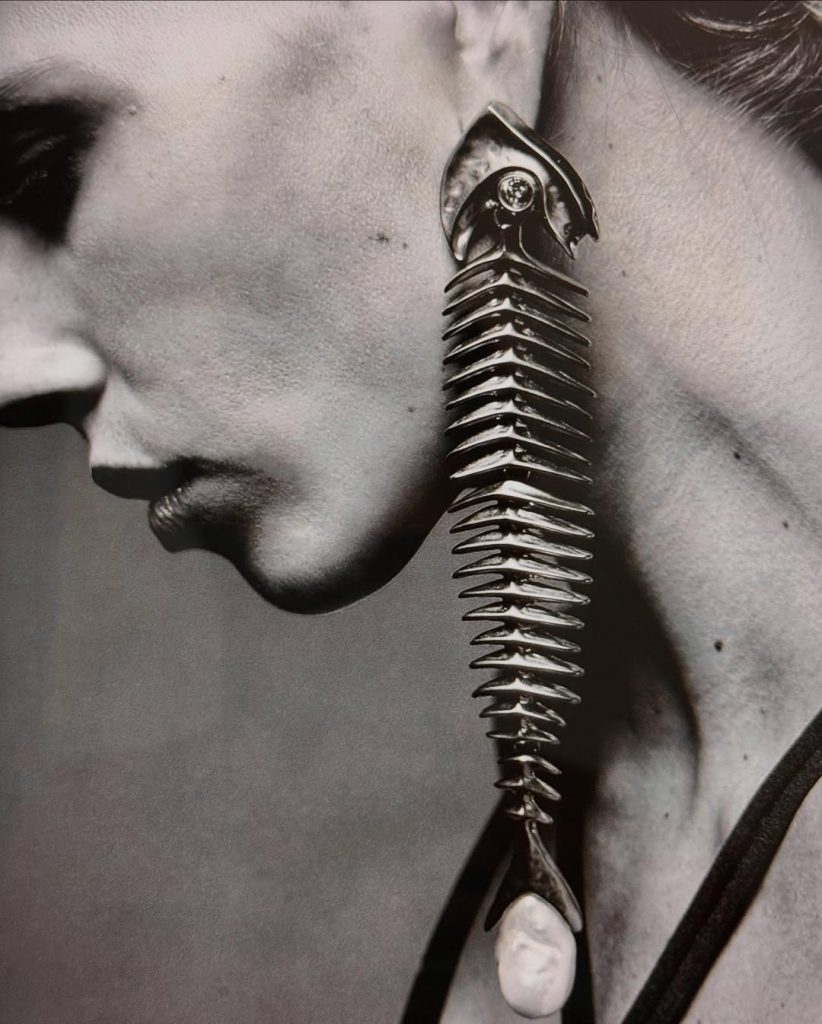
In the spotlight: Schiaparelli, of course. While in previous seasons Daniel Roseberry drew on the founder’s surrealist imagination, this time he leans into a maximalist aesthetic. The models’ arms are weighed down by an avalanche of sculptural bracelets, stacked to the point of excess. Ornamentation becomes almost like armor, and jewelry, an extension of the self.
The same goes for Patou, where Guillaume Henry, true to his vision of joyful, uninhibited luxury, embraces XXL jewelry. For several seasons now, his multi-strand pearl necklaces have electrified his silhouettes. Far from the understated discretion so dear to bourgeois good taste, the designer champions bold, provocative adornment. Even the simple pearl stud is hypertrophied, exaggerated in scale. Here, jewelry is no longer a detail but a statement, one that celebrates a femininity no longer willing to shrink itself.
The absurd as a response
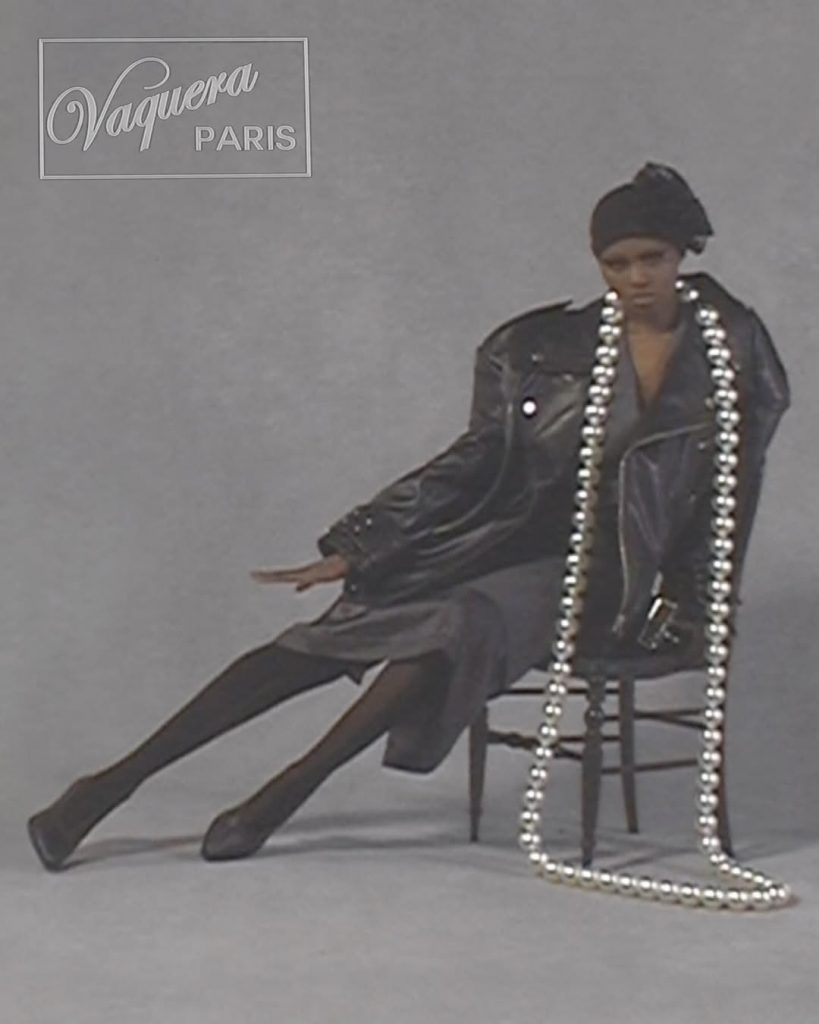
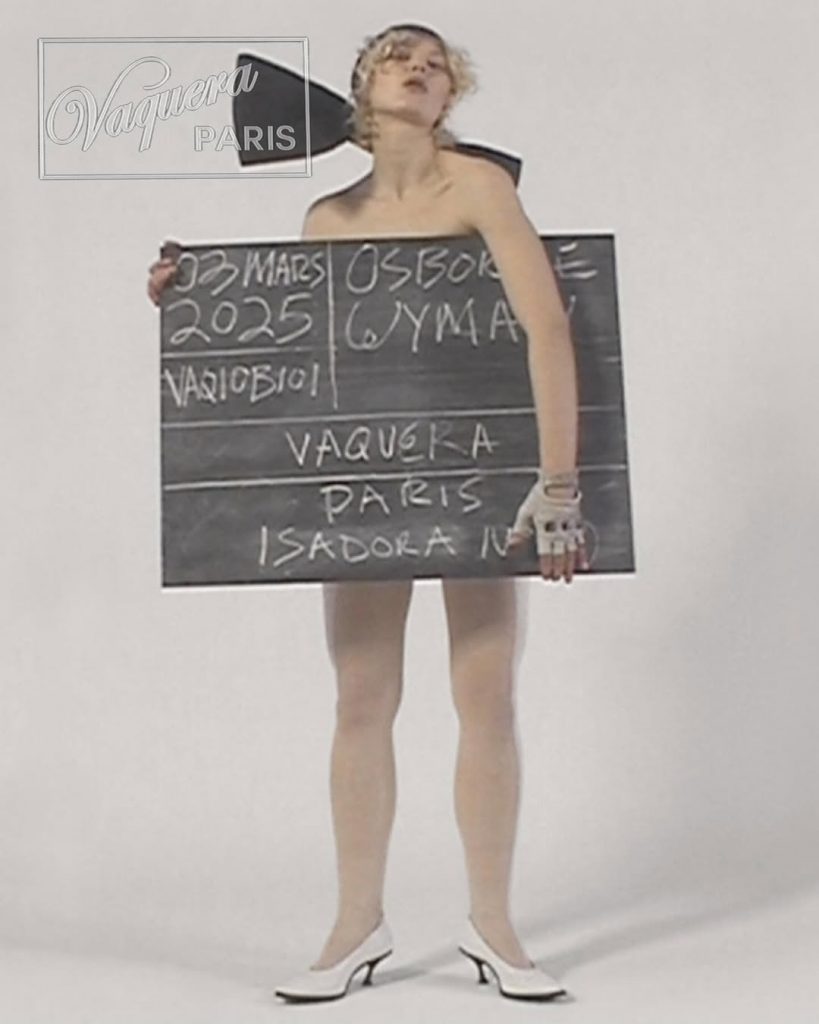
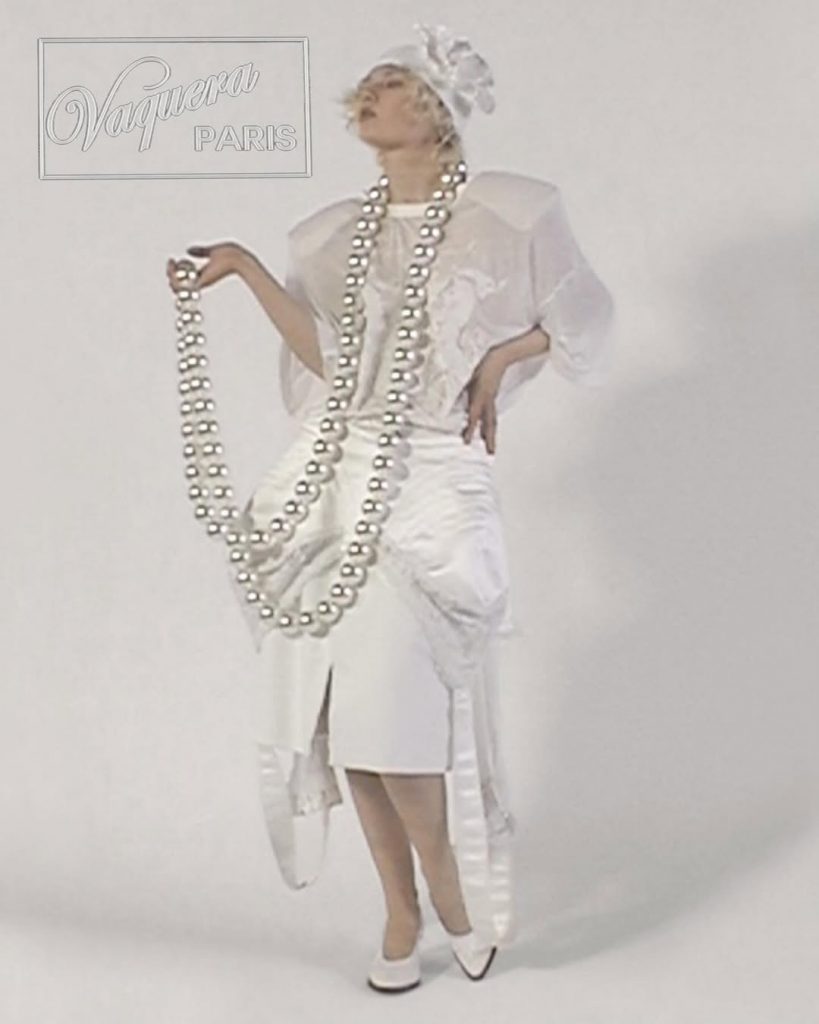
At Vaquera, the Fall-Winter 2025 collection plays with distortion: pearls stretch down to the knees, belts appear to have been hit by a magnifying spell, and a bra is scaled up into a floor-length dress. The jewelry is by D’Heygere, a label known for repurposing everyday objects, a collaboration that takes absurdity to the extreme. It’s a satire of the accessory’s very function, stripped of utility and reimagined as a grotesque aesthetic.
At Vaillant, jewelry is nearly absent: no necklaces or earrings on the models but scarf-length belts and oversized bags with exaggerated buckles take their place.
From the 1980s to today
This taste for extreme ornamentation is reminiscent of the 1980s. At the time, femininity was worn in bold: pearls, gold, lycra, and XXL shoulders. In 1991, during its Spring-Summer show, Chanel was already stacking rows of necklaces like armor. It was also a time of crisis, when glitz became a form of release, a way to ward off reality through display.
Even today, XXL jewelry seems to respond to a pervasive tension: too much uncertainty, so we amplify. Too much uniformity, so we exaggerate to stand out.
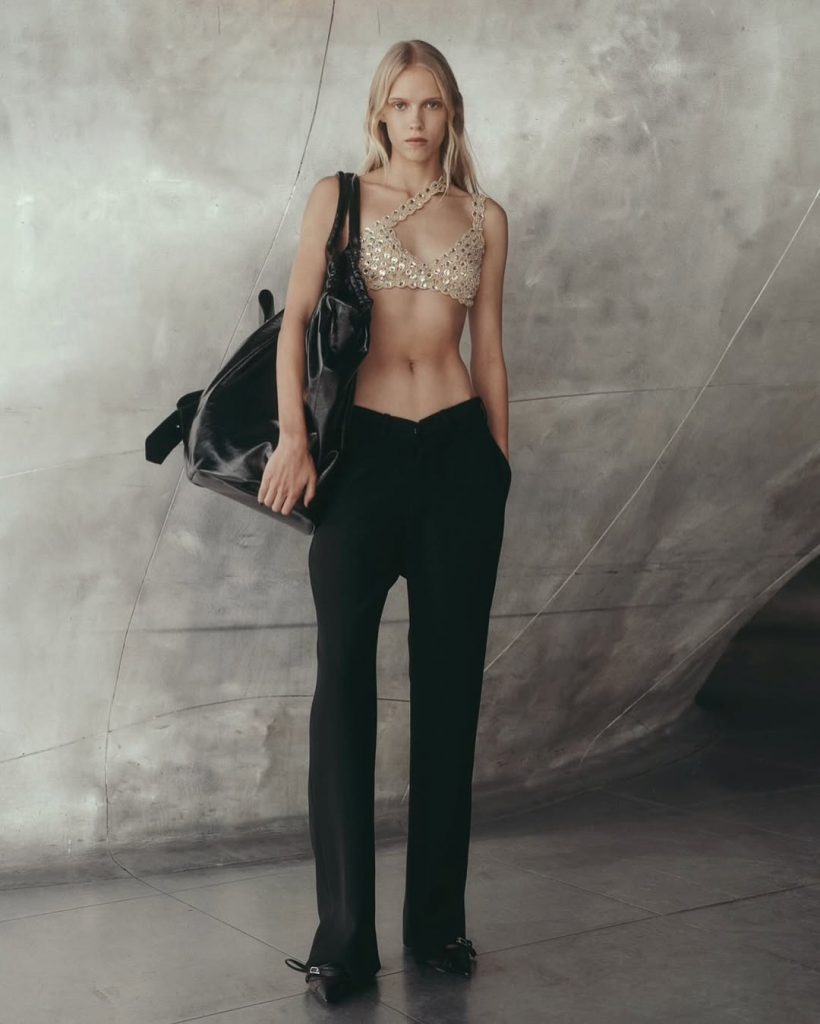
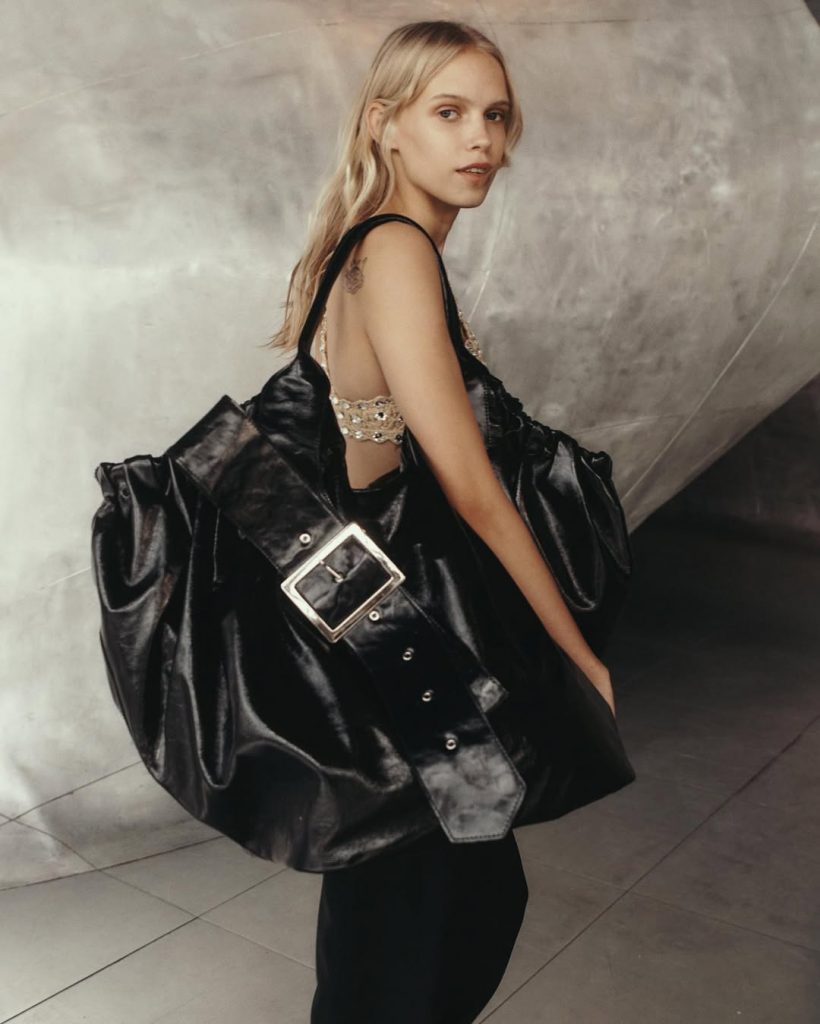
If XXL jewelry is so appealing, it’s also because it allows one to take up space. Through their size, shine, or even sound, these pieces dominate the visual and sometimes auditory field. A way to assert one’s presence, in defiance of the constant calls for discretion often imposed on female bodies. Monumental jewelry thus becomes a tool for expression, almost militant, to affirm one’s identity.
To this, one adds the social media impact: in the age of constant scrolling, an oversized piece of jewelry catches the eye more easily than a discreet accessory. Brands have understood this well. These spectacular pieces, statement necklaces, sculptural earrings, and oversized brooches are designed to be photographed and reposted. In a stream saturated with images, jewelry turns into a visual anchor, a bold signal belonging to a brand or an era.
At a time when fashion often flirts with minimalism, these bold pieces stand their ground. They draw the eye, assert identity, and reject discretion. What if these layers and reimagining were, in fact, a refusal to be erased? In an era that sometimes praises quiet restraint, this jewelry speaks loud and clear: there’s no longer any need to apologize for existing.
Article by Julie Boone.


